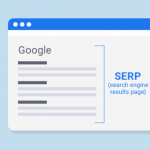Are you confident that your internal controls are effective at mitigating risk? If not, don’t worry – you’re not alone. Many businesses struggle to establish an effective risk management strategy due to ineffective internal controls. This blog post will discuss six ways to audit your internal controls and improve your risk management posture. We will also cover SOX audit SAP controls and use them to your advantage.
Control Environment
The control environment is the foundation of an effective risk management strategy. It encompasses management commitment, tone at the top, and organizational structure. Management must be committed to risk management and ensure that all stakeholders understand and support the organization’s risk appetite. The tone at the top should be transparency and accountability, with a clear understanding of roles and responsibilities. Lastly, the organizational structure should be designed to promote effective risk management.
Risk Assessment Process
The risk assessment process is key to identifying and assessing risks. This process should involve all relevant stakeholders, including business leaders, department heads, and front-line employees. By getting input from various sources, you can ensure that you are capturing all potential risks facing your organization. Once risks have been identified, they need to be assessed and prioritized. This helps you focus your resources on the most important risks.
Control Activities
Once risks have been identified and assessed, it’s important to design and implement controls to address them. Control activities can include anything from policies and procedures to training and education. Implementing effective controls can reduce the risk of financial loss or other adverse events.
Information and Communication Systems
Information and communication systems are essential for stakeholders’ timely and accurate information sharing. This includes internal stakeholders and external partners such as banks, vendors, and customers. By ensuring that relevant information is shared on time, you can avoid costly disruptions to your business operations.
Monitoring and Review Process
The monitoring and review process is key to ensuring ongoing oversight of risk management processes and performance. This process should involve regular reviews by both management and independent auditors. By conducting regular reviews, you can ensure that risks are identified and addressed promptly.
Management Review
The management review is the final step in the risk management process. This process allows senior management to evaluate the overall effectiveness of risk management processes and make necessary adjustments. By conducting regular reviews, you can ensure that your risk management strategy is effective and aligned with your business objectives.
SOX Audit SAP Controls
As a business leader, it’s important to be aware of SOX audit SAP controls and how they can benefit your organization. The Sarbanes-Oxley Act was enacted in 2002 to corporate scandals such as Enron and WorldCom. The act requires public companies to establish internal controls over financial reporting. While compliance with SOX can be onerous, there are many benefits to implementing these controls.
By establishing an effective risk management strategy, you can improve your organization’s financial health and protect your reputation. By auditing your internal controls regularly, you can ensure that they effectively mitigate risk. And by implementing SOX audit SAP controls, you can improve your overall compliance posture.
If you’re looking for ways to improve your risk management strategy, contact us today. We specialize in helping businesses establish effective risk management processes and implement SOX audit SAP controls. We can help you develop a customized solution that meets the unique needs of your business.




